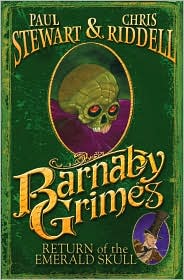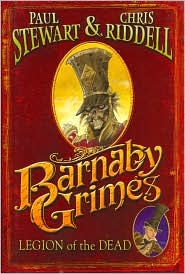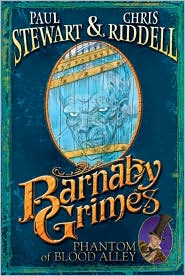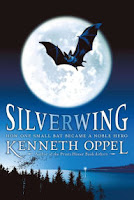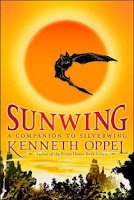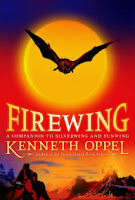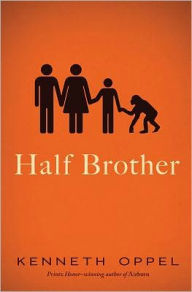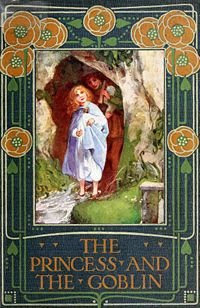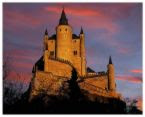Edith Nesbit is perhaps one of the greatest, most influential writers of children's literature that you have never heard of. Born in England in 1858, Nesbit lived until 1924 and published most of her children's books between 1898 and 1913. She is a known influence to CS Lewis and Edward Eager, author of the fabulous Half Magic, among others, both of whom published their children's fantasy novels some forty years after Nesbit. CS Lewis went so far as to mention the Bastable children, characters from Nesbit's The Treasure Seekers, in his book The Magician's Nephew. In her 2002 article linking George Balanchine's production of The Nutcracker to the works of Nesbit and Eager, who himself was a minor figure in the New York theatre scene of the 1940s, Mimi Kramer emphasizes the influence of Nesbit on Eager's writings for children. She cites a 1958 article Eager wrote for the HornBook Magazine of children's literature in which he admires what he calls the "dailiness of the magic" in Nesbit's books and referrs to his own writings as "second-rate Nesbit."
The phrase "the dailiness of the magic" is a perfect description of one of the two great attributes that Nesbit introduced into children's literature with her writings. As Peter Glassman, owner of the Books of Wonder bookstore in writes in his essay on The Magic City, before Nesbit published Five Children and It in 1902, there were two basic types of fantasy writing for children. The first involved children who traveled to some far away magical kingdom, as in Alice in Wonderland and the Wizard of Oz. In the second, the story takes place in a fairy-world completely independent from our own, such as in George MacDonald's the Princess and the Goblin. He goes on to write, "in Nesbit's books, however, readers met children much like themselves, whose lives and problems seemed quite familiar. It was into this everyday setting that Nesbit introduced her singular brand of unpredictable magic."
The theme of real, familiar children is the other major innovation Nesbit brought to children's literature. Previously, during the Victorian era, children and childhood were idealized and fantasized. Nesbit wanted to give children "direct voices, capable of expressing ordinary human emotion that a writer as playful as Lewis Carroll tends to avoid, " as Natasha Walter notes in her article on Nesbit for England's Guardian newspaper. In addition to giving children voices in her work, Nesbit was not afraid to address the realities of childhood. As a child, Nesbit's father died and her family's fortunes rose and fell, so she knew firsthand the pain and turmoil sudden upheavals bring to a child's world. She explores this idea brilliantly in The Magic City.
The story begins with Philip, an orphan, who is being raised by his doting half-sister Helen, twenty years his senior. They have an idyllic life until the day she announces that she is marrying her childhood sweetheart and they will move to his home, the Grange, where they will live with him and his daughter, Lucy. Phillip is shocked and sullen and does not make a good impression upon arriving at The Grange after the wedding. Helen and her new husband set off on their honeymoon leaving the children in the care of Lucy's nurse and the servants. When Philip is rude to Lucy's auntie as well, Lucy is whisked away so that she will not be subjected to this horrid boy. Then Philip is truly alone. He has the "immense liberty of a desolate, empty sort." (The Magic City, p. 7) One of the things I love most about literature that is fifty plus years old is the quality of the writing and the care taken with the words. I think that this quote is the perfect example of that. In the service of exciting plots and rich, new fantasy worlds, many writers for children have forgotten how evocative a few well turned words, rather than paragraphs and paragraphs of description, can be. I firmly believe that there is almost no reason to write a book over 300 pages for children and I am suspect of those that hover around 500 pages. As I have said in other reviews, the real challenge is to write a complete story with detailed characters who live in a fully visualized universe in less than 200 pages. Although she does not write fantasy, I think the works of Polly Horvath, My One Hundred Adventures is her most recent, are perfect examples of this.
That said, Nesbit has a very clever, everyday introduction of magic into the story, which I love because it is exactly the kind of thing I have watched my older son do since he was four or five. Philip goes around the house and collects objects, books, candlesticks, chandelier crystals, ash trays, dominoes, and builds a city that he populates with Noah and his ark, as well as lead soldiers. He does this in the absence of Lucy's overbearing, coldhearted nurse, who has rushed off to see a brother thought to be lost at sea. Philip awakens in the night and, by the light of the full moon, goes downstairs to look at his city. Then the magic happens. Philip is transformed and transported into the city, as is Lucy, who returned home that night unbeknownst to Philip. The two eventually meet up in the city and, after a few encounters, are asked to leave. On their way out, however, Lucy is waylaid and Philip returns on his own and goes back to bed. The next morning the house is silent. All the servants are looking for Lucy and Nurse is dismantling the city. Realizing he must return to the city to rescue Lucy, Peter rebuilds it and enters once more.
Philip learns that a prophesy has predicted a Deliverer and a Destroyer and, if he wants to stay in Polistarchia, the country that the magic city, Polistopolis, is in, he must accept the role as Deliverer and perform seven great deeds. Lucy objects, saying she wants to help, and she is allowed to join Philip. But, they are also challenged by a lady whose face is covered by a motor-veil. She demands to be the Deliverer, but, as Philip has already taken that title, Mr Noah creates the title of "Pretender-in-Chief to the Claimancy of the Deliverership," or Pretenderette for short. She is allowed to take on the deeds if Philip fails, and she tails the children throughout the story on a great hippogriff she has gained control over with a magic word. The children are given some helpful companions, including Polly the Parrot and Max and Brenda, the dogs. Philip fights a dragon and rescues a princess, Lucy, and Lucy completes the task of unravelling the great Mazy Carpet when Philip cannot figure out how. They also have to slay the lions in the desert, which is kind of a strange scene. The lions, after all, are the wooden ones from Noah's ark, so the children do not actually kill them. They tie them up with ropes then have the dogs lick the paint off of them because this will keep them from feeling anything when the children disable them by sawing off their legs... This would not have been written today, nor would Lucy be able to call the dark skinned islanders they encounter later in the story "savages." However, Philip does tell her she's a stupid donkey when she says this since they are so clearly children just like them. There was no such thing as political correctness in 1910, but Nesbit seems to have a good sense of conscience.
The children go on to help the Dwellers by the Sea overcome their fear of water and free the people of Somnolentia from the wrath of the Giant Sloth and return water to the land, thus allowing the people to stop bathing in pineapple juice. Throughout the story, Philip and Lucy struggle with their antipathy for each other, frequently discussing the "pax" that they have called and what it encompasses - will Philip be kind to Lucy after they return home? As Glassman notes, Philips experience of having his life turned upside down by his sister's marriage, "throwing him helter-skelter into a new home, complete with a new family, and - worst of all - a stepsister. Philip's resentment of all this upheaval is as recognizable today, in our world of frequent divorce and remarriage, as it was in Edwardian Britain." Yet, as Philip embarks on his quest to perform the seven deeds, he also goes on a personal journey to "accept the changes that have been forced upon him and to discover that his sister's love for her new husband in no way diminishes her love for him."
It is amazing to think that, almost 100 years ago, themes like this were making their way into children's literature. It is also amazing to compare this work of fantasy to the amazingly rich worlds that have been created since then by writers like Dianna Wynne Jones, Joan Aiken, Philip Pullaman and JK Rowling, to name a few. On a final note, it is interesting to see how Nesbit uses magic in her writing and how this is different from the above noted authors. As Natasha Walter points out, for Nesbit, "magic promises everything but turns out to be a source of chaos." There is no great evil and no great good, no Dumbledore or Voldemort. The children in her stories must muddle through on their own, making their own mistakes and conquests. There is no destiny, no overriding universal force that guides them.
And, I have to mention that at one point in the story Philip accuses Lucy of being "snarky." I had no idea that this word is over 100 years old!!
If The Magic City doesn't sound like your cup of tea, consider The Railway Children, which has no magic in it. Written in 1906, it is the story of a family whose fortunes change when their father is accused of selling secrets to the Russians. A move to the country and poverty, as well as their mother's attempts to sell her writing and support her four children leave the children with free time to roam the countryside and wave at the train as it passes each day. When they alert the engineer to a potential disaster, they are befriended by an elderly gentleman who turns out to be the owner of the railroad and the story unfolds from there... This book has been made into BBC series and theatrical movies five times between 1951 and 2000, with the added touch of the actress Jenny Agutter, who played the daughter, Roberta, in the 1968 and 1970 productions playing the mother in the 2000 release, which is a very enjoyable production. You might also consider the Psammead trilogy, the first of which is Five Children and It, published in 1902. Sent to the countryside from London because of the war (Hm, what story does this remind me of?) the children discover a psammead, or sand fairy, while playing in a gravel pit. Unlike the dainty, winged fairies we think of, It is hairy, grumpy and has a phobia of water. He grants the children's wishes, but they never turn out quite as expected. This has also been made into several series and movies, the most recent of which starred Kenneth Brannagh, Zoe Wannamaker and Freddy Highmore and involved a bit of plot tweaking, but was still an enjoyable children's movie,



